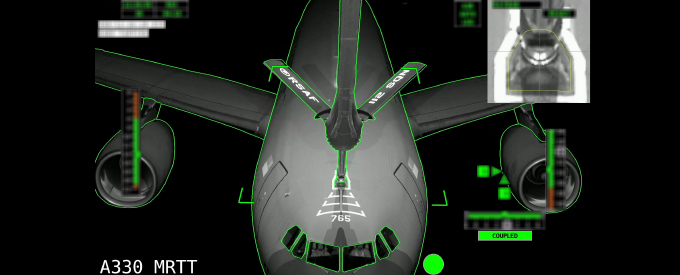The Airbus A330 Multi-Role Tanker Transport (MRTT) has achieved a groundbreaking milestone by successfully conducting an automated air-to-air refuelling flight test under challenging night conditions. The achievement brings the aircraft closer to full certification in 2025 and marks a significant leap forward in aerial refuelling capabilities.
A Republic of Singapore Air Force A330 MRTT, equipped with the latest automated air-to-air refuelling system, underwent rigorous testing between May and June. The aircraft successfully refuelled a mix of Singaporean and Portuguese fighters, including F-16s and F-15SGs, as well as another Singaporean MRTT.
During these flights, more than 500 contacts were performed, out of which over 150 contacts were automatic in night conditions. As part of these night tests, contacts were carried out in different night illumination conditions and receiver external configurations.
Superior Image Quality
The success of the aircraft’s night-time refuelling trials was made possible through significant advancements in technology. Airbus developed a set of new algorithms specifically for night operations and introduced a cutting-edge camera system.
The enhanced system not only enables automated refuelling in darkness but also provides superior image quality for manual refuelling, improving overall visibility for the refuelling operator in all lighting conditions.
Building on previous successes with F-16s and other A330 MRTTs, the aircraft has secured certification for automated refuelling of F-15 fighters during daylight conditions.
With over 300,000 flight hours and the ability to refuel over 25 aircraft types, it remains the gold standard in aerial refuelling.
Fuel Giant
The A330 can carry up to 111 tonnes of fuel; this is the highest capacity of all tanker aircraft, even those with additional fuel tanks in the cargo deck. It has the capacity of offloading 50,000 kg of fuel to a broad range of receivers during a four-hour loitering mission at over 1,000 nm from its take-off point.
It can carry a maximum payload of up to 45 tonnes, combining the passenger cabin and the lower deck: up to 300 passengers; MedEvac cabin layout with 40 stretchers, 20 seats for medical staff and 100 passengers; up to 37 tonnes of cargo in the lower deck; 27 LD3 containers or eight military pallets.
Another typical mission is the deployment of fighter aircraft over a long distance. It can support the deployment of four fighter aircraft plus 50 personnel and 12 tonnes of freight (luggage, spare parts and equipment) in one direct flight over 5,200 km, e.g. from Europe to Afghanistan.
To refuel receptacle-equipped aircraft such as the F-16 Fighting Falcon, F-35A Lightning II, or another the A330 MRTT (when fitted with a Universal Aerial Refuelling Receptacle Slipway Installation, UARRSI), the aircraft is provided with the advanced Airbus Defence and Space Aerial Refuelling Boom System (ARBS).
Its fast fuel flow rate (up to a maximum of 3,600 kg/min – 1,200 US gal/min) makes the ARBS a capable new-generation flight-proven boom available.
Under-Wing Pods
Under-wing pods provide simultaneous hose and drogue refuelling at high fuel offload rate (1,300 kg/min – 420 US gal/min), allowing receivers to minimise refuelling time and increase operation efficiency.
The Cobham 905E under-wing pods, currently in service and proven in operation, enable the A330 MRTT to refuel any NATO or allied probe-equipped receivers such as the Eurofighter, the Tornado, the Jaguar or the F/A18 Hornet. Its physical compatibility with receivers across the world is established, demonstrated and certified to allow coalition interoperability.
The 900 series wing-pods incorporate a digitally controlled and electrically operated hose drum unit, optimising reliability and maintainability.
Fuselage Refuelling Unit
Large probe-equipped aircraft such as the A400M or C295 can be refuelled at a high fuel offload rate via the Cobham 805E Fuselage Refuelling Unit (FRU).
The FRU, a removable hose and drogue unit, allows refuelling receivers with a different fuel type. This option ensures NATO fuel type is transferred from wing-pods, while an alternative fuel type is dispensed from the FRU.
Those air-to-air refuelling (AAR) systems are controlled from an advanced Fuel Operator Console that is positioned in the cockpit, increasing the safety of the AAR operation by ensuring a timely and synchronised reaction of the flight crew to unexpected events.


No Comments